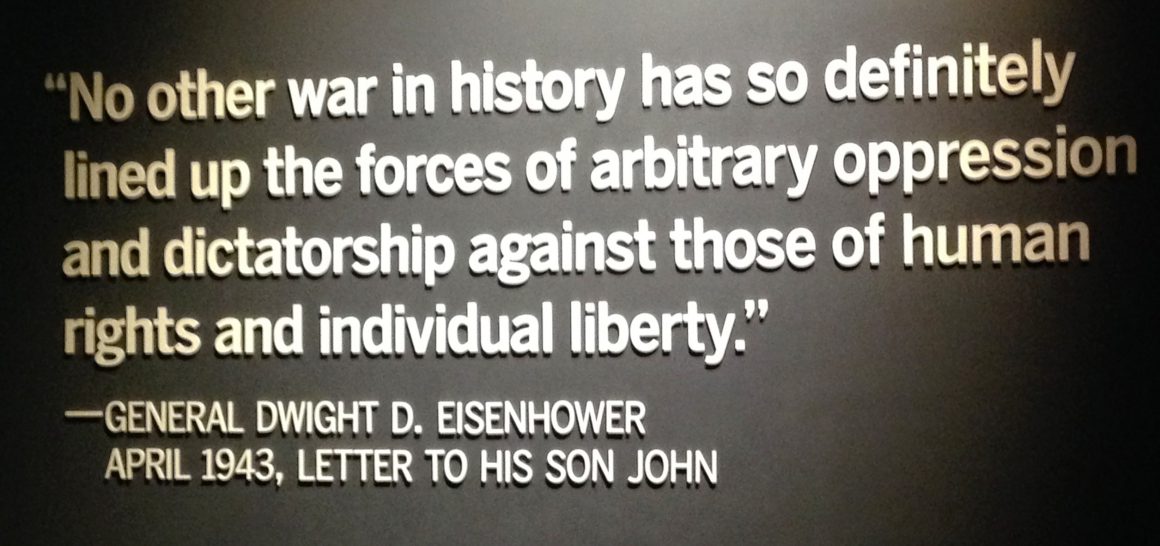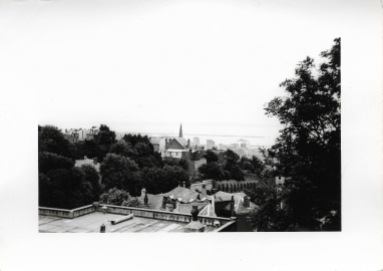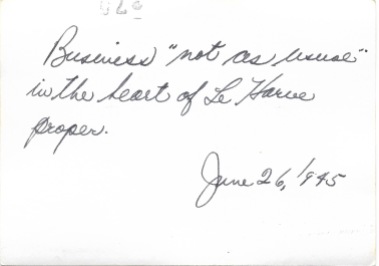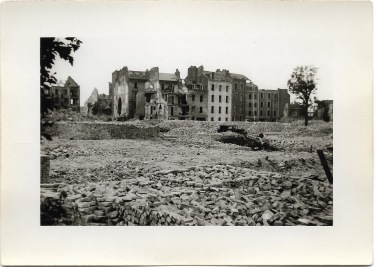Our convoy rolling along a French highway toward Le Havre, France.
Bernard McKenzie, June 1945
French flags such as shown flying here were hoisted in France as the Jerry’s were pushed out.
Bernard McKenzie, June 1945
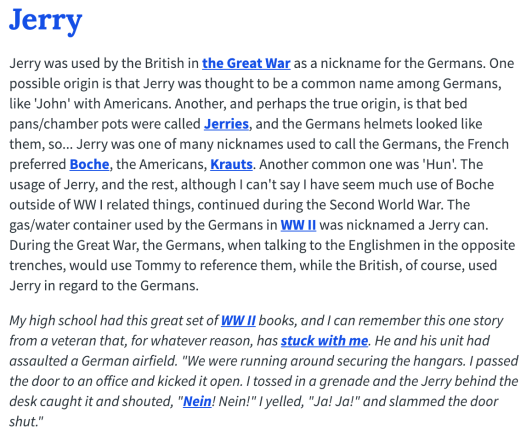
Jerry’s is a term used by British and American soldiers to refer to Germans during WW1 and WW2, from Urban Dictionary.
The routine physical inspection. This particular physical took place at Camp Oklahoma City, France. (near Reims)
Bernard McKenzie, June 1945
War is hell! Ask the residents of Le Havre–if you can find any.
Bernard McKenzie, June 1945
A typical German pill box. This particular one was located near the harbor at Le Havre, France.
Bernard McKenzie, June 1945
The truck just ahead of the vehicle I was riding in enroute to Le Havre from Germany. Chuck Miller seated and facing my camera.
Bernard McKenzie, June 1945
Enroute to Camp Oklahoma City, France (assembly area near Reims) our convoy stopped frequently for breaks. We amateur photographers had a lot of material here.
Bernard McKenzie, June 1945, near French Border in Germany
Vineyards by the acres were a common sight. This flat section of vineyards was nothing like the mountainous ones in the Moselle River area.
Bernard McKenzie, June 1945, near Bonn, Germany
Willie, Herman Rhinehart, & Peck. Bivouac area near Schleiz, Germany.
Bernard McKenzie, June 1945

